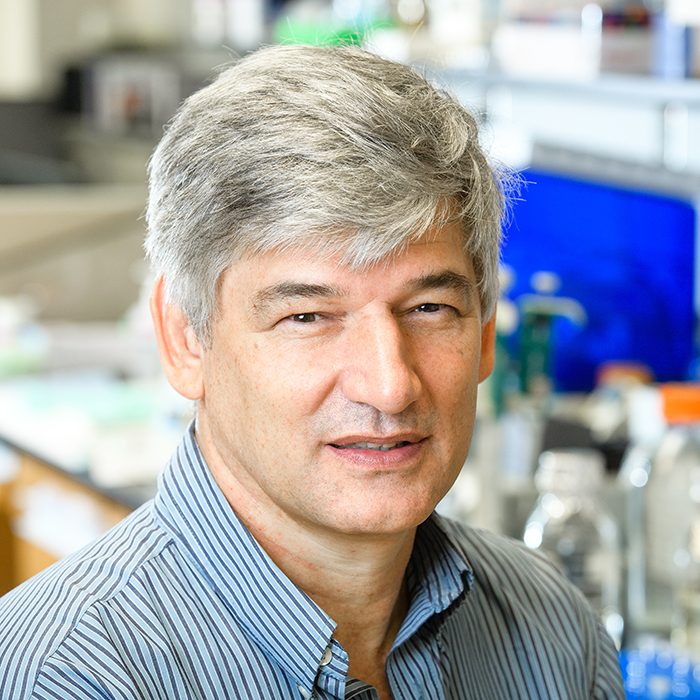![]()
 Andrie Steyn, Ph.D.Adrie Steyn, Ph.D., professor in the Department of Microbiology, is the latest winner of the Heersink School of Medicine’s Featured Discovery. This initiative celebrates important research from Heersink faculty members.
Andrie Steyn, Ph.D.Adrie Steyn, Ph.D., professor in the Department of Microbiology, is the latest winner of the Heersink School of Medicine’s Featured Discovery. This initiative celebrates important research from Heersink faculty members.
Steyn’s study, "A high-resolution 3D atlas of the spectrum of tuberculous and COVID-19 lung lesions," was recently published in EMBO Molecular Medicine.
“In 2021, approximately 1.6 million people died from tuberculosis (TB), and close to two billion people are latently infected with TB,” said Steyn. “The unique ability of Mycobacterium tuberculosis (Mtb), the bacterium causing TB to persist in millions of people in a dormant, drug-resistant state, sometimes reactivating to cause TB decades after the initial infection, has puzzled scientists for decades.”
The need for understanding TB drove Steyn and his lab to develop an imaging tool called microCT, which his team used to create a three-dimensional atlas of the spectrum of lung lesions in tuberculosis and COVID-19. They were able to study lungs that had been affected by both diseases at microscopic levels.
“My lab is interested in studying the mechanisms whereby Mtb causes TB disease in humans and in understanding latent TB,” said Steyn. “Our long-term goal is to help develop novel diagnostics, biomarkers, and host directed therapies for the control of TB.”
Read more from UAB News about the team’s work.
The Heersink School of Medicine communications staff sat down with Dr. Adrie Steyn to gain insight about this study, UAB, and the science community.
What compelled you to pursue this research?
Originally, I was trained as a yeast geneticist in South Africa, and during the completion of my Ph.D. in the USA, I was introduced to Barry Bloom, a world-renowned TB scientist who told me that TB is a huge problem in South Africa. To my embarrassment, I was unaware of this fact. However, it triggered my attention, and I successfully applied for a postdoctoral position in his laboratory in Boston.
What was your most unexpected finding?
Our most surprising finding was the recent discovery that, unlike depictions of granulomas, the hallmark of TB disease, as simple spherical structures, human granulomas exhibit complex, cylindrical, branched morphologies that are shaped by the airways.
What is your research’s relevance to human disease?
The development of a high-resolution imaging platform for studying the 3D structure of human TB granulomas in surgically resected lungs challenged the dogma in the TB field that granulomas are spherical. Our findings provide evidence for considering aerosolized anti-TB drug delivery as it would allow delivery of high, local concentrations of drugs directly into granulomas or cavities in the lung. This approach may also reduce treatment times and anti-TB drug toxicity.
What made you come to UAB?
In 2003, I interviewed for a faculty position in the Department of Microbiology at UAB. During my campus interview with faculty, I was struck by the friendliness, collegiality, and most importantly, the following statement made by many faculty: "When we recruit faculty, we want them to be successful. So, we provide them with the necessary resources to be successful." Right there, I decided that I want to join UAB.
What do you find makes the science community here unique?
The research and professional culture at UAB allow me to translate my research findings from bench to bedside. Importantly, the UAB leadership enabled me to establish a second laboratory at the Africa Health Research Institute (AHRI) in Durban, South Africa, where I study TB, train UAB students and postdoctoral fellows, and host UAB faculty. My collaborators include UAB and AHRI cardiothoracic surgeons, pulmonologists, radiologists, forensic pathologists, and infectious disease experts, which enabled me to establish a unique, well-funded translational science program.
